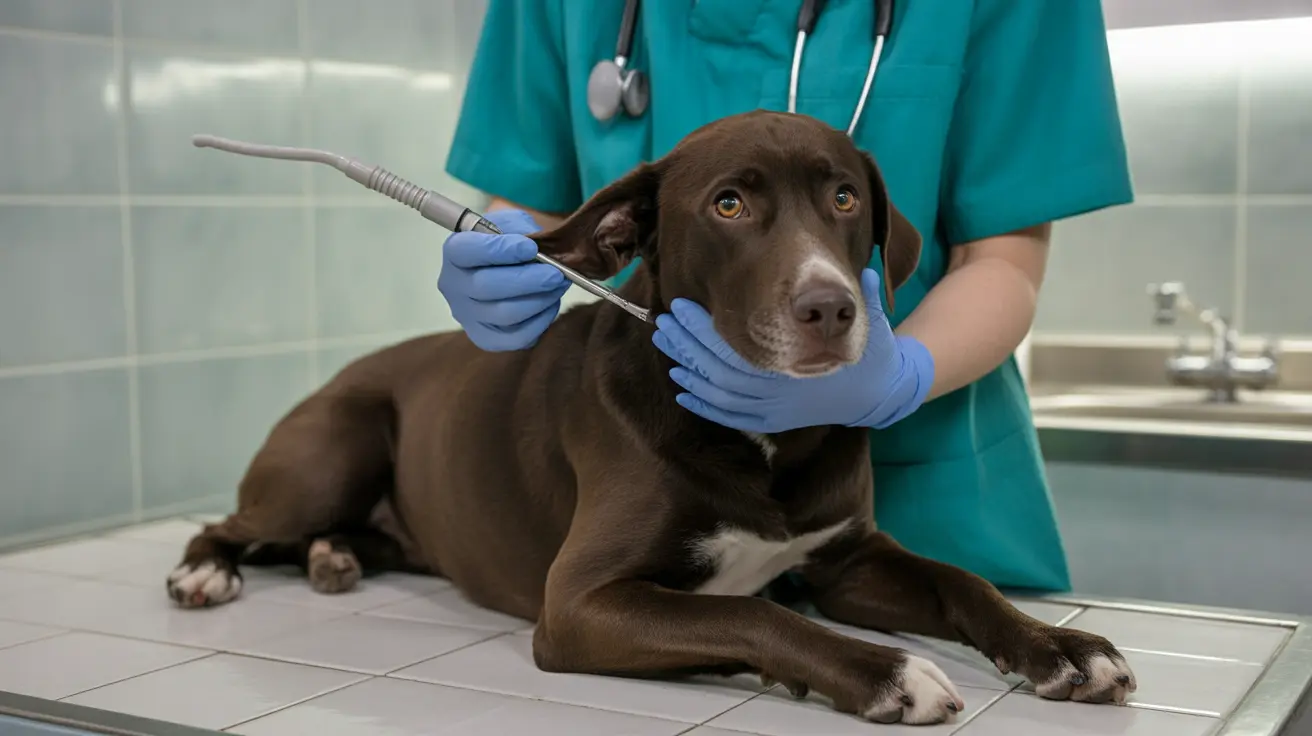When your dog is diagnosed with an adrenal tumor, it can be an overwhelming experience. These rare but serious growths in the adrenal glands can significantly impact your pet's health and quality of life. Understanding what these tumors are, how they're treated, and what to expect can help you make informed decisions about your dog's care.
In this comprehensive guide, we'll explore everything you need to know about adrenal tumors in dogs, from early warning signs to treatment options and long-term management strategies.
What Are Adrenal Tumors in Dogs?
Adrenal tumors develop in the small glands located near your dog's kidneys. These glands are crucial for producing important hormones like cortisol and adrenaline. When tumors develop, they can be either benign (non-cancerous) or malignant (cancerous), and may disrupt normal hormone production.
There are two main types of adrenal tumors:
- Adrenocortical tumors (affecting the outer layer of the gland)
- Pheochromocytomas (affecting the inner layer of the gland)
Common Symptoms and Warning Signs
The symptoms of adrenal tumors can vary depending on the type of tumor and the hormones affected. Common signs include:
- Increased thirst and urination
- Changes in appetite and weight
- Weakness or collapse
- Excessive panting
- Pot-bellied appearance
- Hair loss or thinning coat
- Changes in behavior or energy levels
Diagnosis Process
Veterinarians use several methods to diagnose adrenal tumors:
- Physical examination
- Blood and urine tests
- Hormone level testing
- Imaging studies (ultrasound, CT scan, or MRI)
- Sometimes, tissue biopsies
Treatment Options and Management
Treatment typically involves one or more of the following approaches:
Surgical Treatment
Surgery (adrenalectomy) is often the preferred treatment for adrenal tumors when possible. This complex procedure requires an experienced veterinary surgeon and careful pre- and post-operative care.
Medical Management
When surgery isn't an option, medications can help manage symptoms and hormone levels. These might include:
- Hormone-blocking drugs
- Blood pressure medications
- Pain management medications
Monitoring and Supportive Care
Regular veterinary check-ups and ongoing monitoring are essential for managing the condition and adjusting treatment as needed.
Long-term Prognosis and Quality of Life
The outlook for dogs with adrenal tumors varies depending on several factors:
- Tumor type and size
- Whether the tumor is benign or malignant
- The chosen treatment approach
- The dog's overall health and age
Many dogs can maintain a good quality of life with proper treatment and management, especially if the condition is caught early.
Frequently Asked Questions
What are the common symptoms of adrenal tumors in dogs?
Common symptoms include increased thirst and urination, changes in appetite, weakness, excessive panting, weight changes, and hair loss. Some dogs may also show behavioral changes or have a pot-bellied appearance.
How are adrenal tumors in dogs diagnosed?
Diagnosis involves a combination of physical examination, blood and urine tests, hormone level testing, and imaging studies such as ultrasound, CT scans, or MRI. Your veterinarian may also recommend a biopsy in some cases.
What are the treatment options for dogs with adrenal tumors?
Treatment options include surgery (adrenalectomy), medical management with hormone-blocking drugs and other medications, and ongoing monitoring. The best treatment approach depends on the tumor type, size, and your dog's overall health.
What is the prognosis for a dog with a malignant adrenal tumor?
The prognosis varies depending on the tumor type, size, and treatment approach. Dogs who undergo successful surgery may live for several years, while those treated with medication alone typically have shorter survival times.
How can I monitor my dog's health after it has been diagnosed with an adrenal tumor?
Regular veterinary check-ups, monitoring of symptoms, and periodic blood tests and imaging studies are essential. Watch for changes in drinking, eating, and activity levels, and report any new symptoms to your veterinarian promptly.
Conclusion
While an adrenal tumor diagnosis can be frightening, understanding the condition and available treatment options can help you make the best decisions for your dog's care. Work closely with your veterinary team to develop an appropriate treatment plan and maintain regular monitoring to ensure the best possible outcome for your beloved pet.






